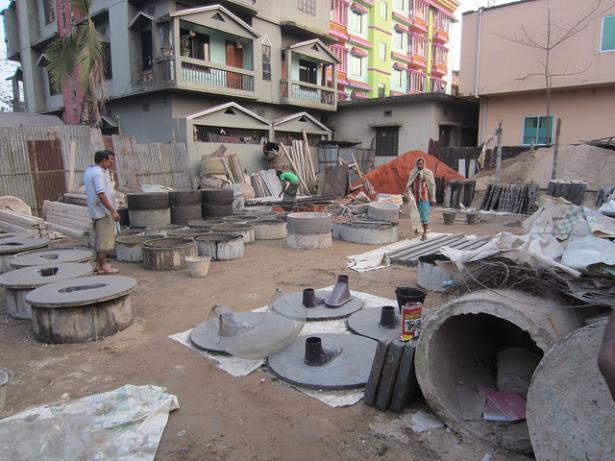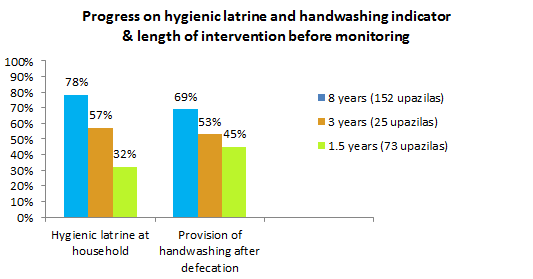New report reveals how BRAC, an innovative NGO in Bangladesh, provided sanitation to 39 million people.
Published on: 08/03/2016

Nine Years of Scale and Innovation in Bangladesh is the final report on the BRAC water, sanitation and hygiene (WASH) programme's phases that were funded by the Netherlands government and the Bill & Melinda Gates Foundation that ended in 2015. Since 2013 a third phase was funded under the BRAC DFID/AusAid Strategic Partnership Agreement.
From 2006 to 2015 the BRAC WASH programme has helped over 39 million people (including poor and ultra-poor) gain access to hygienic latrines and 2.3 million people access to safe water across 250 sub-districts of Bangladesh.More than 65,000 gender-balanced Village WASH committees with representation from every income group have been set up. These are some of the impressive results mentioned in the final report on the nine-year programme in Bangladesh showing that community mobilisation, gender inclusion and equity are essential ingredients for a successful programme.
BRAC WASH, believed to be the largest WASH programme anywhere managed by an NGO, has demonstrated learning-in-action and become a beacon for progress on sanitation and hygiene in the region and globally. Experience from previous large scale programmes forms the basis for this particular approach. Having learned that building capacity and empowering community leaders would be more effective than just building toilets, BRAC’s approach focused on:
Grants and loans were issued to ultra-poor and poor households respectively to cover the cost for a hygienic household latrine. The programme raised awareness of WASH issues through household visits and community cluster meetings.
An internal learning mechanism was set up to review the performance and adapt the approaches in the programme. IRC, as the knowledge partner, introduced the Qualitative Monitoring System (QIS), to monitor people’s behaviour for instance handwashing and use of toilets.
In all the 250 sub-districts taken together, 39.4 million people gained access to a hygienic latrine during the programme period – thanks to the combined efforts of BRAC, government departments and other significant implementing agencies. In these areas BRAC WASH reached an average of 13.9 million people in communities each year with hygiene education and 2.9 million students a year in 5,550 secondary schools. About 2.3 million people gained access to safe water.
Some of the most significant advances – a hygienic household latrine and facilities for handwashing in or close to the latrine – show the benefits of sustained interventions. Areas where BRAC WASH has worked for a longer period show greater advances than those where the programme has worked for a shorter time.

BRAC is ensuring continuity by integrating elements of the programme into its health, education and other programmes. However, this is not sufficient to meet the SDG target for water and sanitation for all people to have safe drinking water and sanitation by 2030. Future work should focus on reaching the unreached, finance mechanisms for the poor and ultra-poor to build and maintain their toilets, and a greater focus on water quality and quantity.
IRC works with BRAC WASH as a knowledge partner and is proud to do so. Becoming a partner requires more than having specialist knowledge or even sharing it; it means sharing skills and putting knowledge to use in a way that fits the BRAC WASH mission, priorities and work culture. IRC supports BRAC WASH in monitoring its WASH programme and joins with it to reflect on critical issues and innovate to overcome barriers and sustain performance. IRC aims to be a valued partner for large scale monitoring.
IRC has made significant contributions towards:
Short-term, unsustainable projects must become a thing of the past. Everyone deserves water and sanitation services every day, every year, forever. IRC works with far-sighted organisations like BRAC that do not accept the status quo and are impatient for change. Long-term change takes time to embed and sustain.
The final report on the BRAC WASH programme's first and second phases, Nine Years of Scale and Innovation in Bangladesh, is available as a resource below.